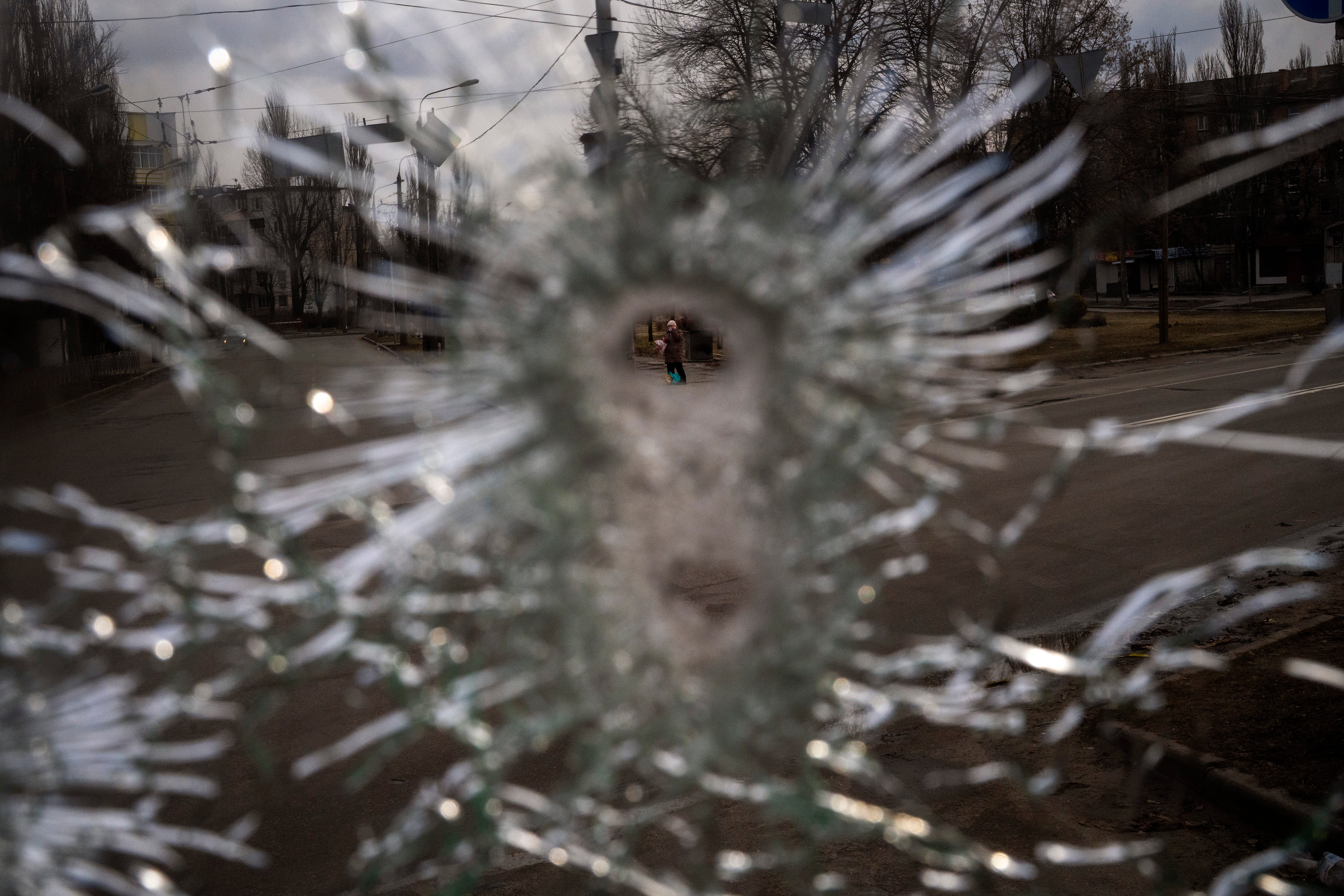The Independent's journalism is supported by our readers. When you purchase through links on our site, we may earn commission.
Russia using fraction of anti-satellite resources in Ukraine invasion
Kremlin has slew of technologies to jam or counteract satellite communications and reconnaissance
Your support helps us to tell the story
This election is still a dead heat, according to most polls. In a fight with such wafer-thin margins, we need reporters on the ground talking to the people Trump and Harris are courting. Your support allows us to keep sending journalists to the story.
The Independent is trusted by 27 million Americans from across the entire political spectrum every month. Unlike many other quality news outlets, we choose not to lock you out of our reporting and analysis with paywalls. But quality journalism must still be paid for.
Help us keep bring these critical stories to light. Your support makes all the difference.
About two weeks before Russia invaded Ukraine, Todd Harrison raised what seemed like a reasonable concern at the time.
“If Russia invades Ukraine, this may be the first time counterspace weapons play a major role in a conflict,” the aerospace and international security analysis with the Center for Strategic and International Studies posted on Twitter.
After all, satellite communications and imagery play a greater role in modern civilisation and warfare than ever before, and the Russian military tested an anti-satellite missile, successfully destroying a defunct Russian satellite, just months ago in November.
“It is not hard to imagine a range of scenarios in which Russia uses counterspace weapons (kinetic and/or non-kinetic) to disrupt and degrade US and allied space-based [Intelligence, Surveillance, and Reconnaissance] support to Ukrainian forces,” Mr Harrison added.
But like other reasonable assumptions about Russia’s strategy and chances in a hypothetical war in Ukraine, the actual war in Ukraine has assumptions about Russia’s willingness, if not ability, to use counterspace weapons may have been off.
Just as Russian forces were stymied by poor supply logistics and stiffer than anticipated Ukrainian resistance rather than steamrolling through Ukraine, its military has — so far — kept most of its counterspace arsenal out of the fight.
“We know that Russia is using electronic attacks to interfere with GPS in the region, and that was happening before the invasion started,” Mr Harrison said. But, he added, “I have not seen evidence yet of other forms of attacks to degrade space support to Ukraine.”
And Russia, theoretically at least, has other capabilities it can bring to bear.
“What I will be watching for are additional jamming of satellite communications, cyber attacks against space systems, and laser dazzling of imagery satellites,” Mr Harrison said.
But due to the tense diplomatic situation, “If these attacks occur, I suspect we may not hear about it right away, but it would represent a major development in counterspace warfare.”
In a February 2021, Center for Strategic and International Studies published a report titled “Defense against the Dark Arts in Space” that discussed Russian counterspace abilities ranging from orbital mines for destroying satellites to radio-frequency jamming aerosols to be released in space to block satellite communications. The now prescient report included a hypothetical conflict involving Russian military action in the Baltic states.
But despite its wide array of counterspace options, the Russian military may decide it simply doesn’t need to deploy them to reach its goals in Ukraine.
“We know from open source research and reporting that Russia has a pretty robust terrestrial counterspace capability in the form of mobile jammers,” said Dr Brian Weeden, director of program planning for the Secure World Foundation, a space sustainability think tank. “We’ve seen them deploy and use it since 2014 in eastern Ukraine and also Syria.”
And reports emerged Friday of an alleged Russian cyberattack cutting off internet access to users of the US-based internet satellite service provider Viasat in Ukraine and Germany, according to reporting by Sky News.

But Russia could escalate tensions in space if it so chooses. While much of the discourse around the risks of the war in Ukraine spiraling out of control has focused on a nuclear confrontation between Russian and the NATO alliance, an escalation to the use of anti-satellite missiles like the one Russia tested in November could be nearly as bad. Mr Harrison said such an escalation is much less likely than Russia using less intensive counterspace measures.
“A kinetic attack in space would represent a major aggression that extends well beyond the borders of Ukraine because space is a shared environment that is used by many nations,” he said.
The Russian missile test in November generated a cloud of debris that threatened both astronauts and cosmonauts aboard the International Space Station and could remain in orbit for decades to come. Such debris can threaten other satellites sometimes years later, potentially turning them into additional clouds of debris, which destroy further satellites and so on.
This chain reaction, known as the Kessler Syndrome, could potentially render space unusable by any nation for decades or longer. It’s a problem that already exists due to the unintentional, or at least, not intentionally malign creation of space junk, such as the defunct Chinese rocket segment that likely struck the far side of the Moon on Friday.
The use of weapons intentionally generating space debris could act as a catalyst, triggering a Kessler Syndrome scenario.
Dr Weeden and Mr Harrison agree however, that such a scenario is extremely unlikely. It’s something “no country has ever done before as part of an armed conflict,” Dr Weeden said.
Russia has also hinted that when it comes to its own satellites, it draws the line at far less than targeted destruction.
After reports emerged that hackers had shut down Russian satellite operations at Roscosmos, the Russian Space Agency, Roscosmos head Dmitry Rogozin denied the reports, saying, “offlining the satellites of any country is actually a casus belli, a cause for war.”





Join our commenting forum
Join thought-provoking conversations, follow other Independent readers and see their replies
Comments